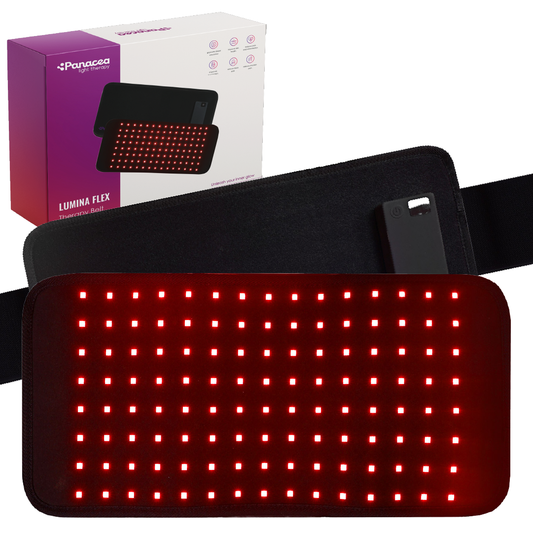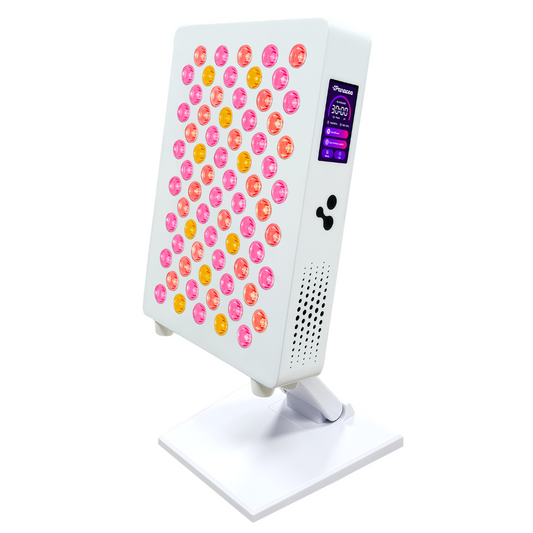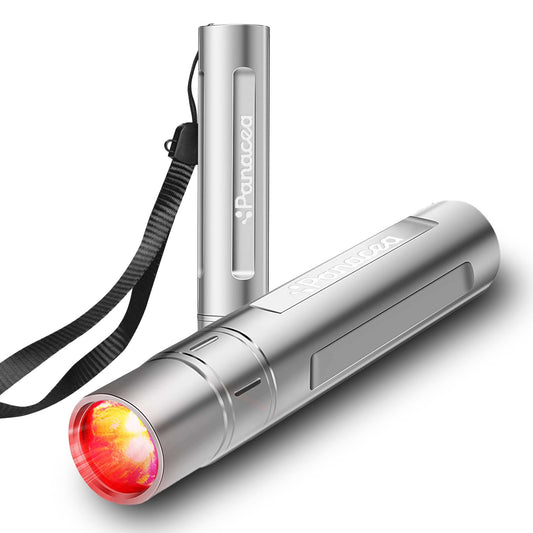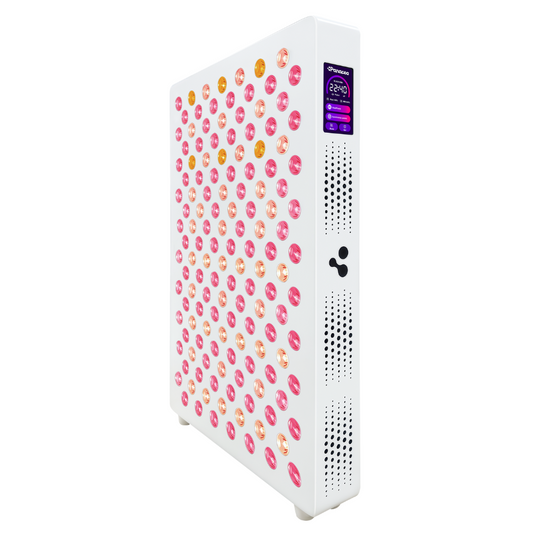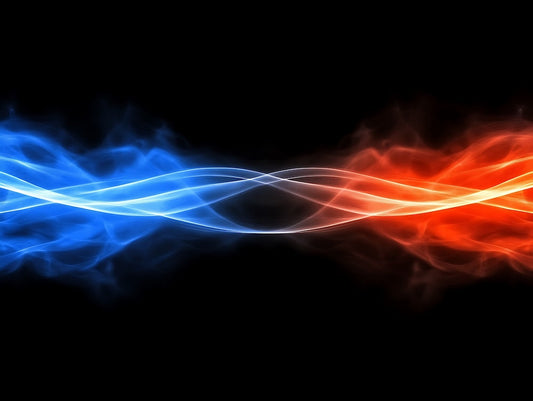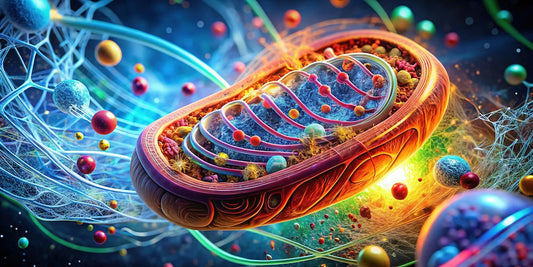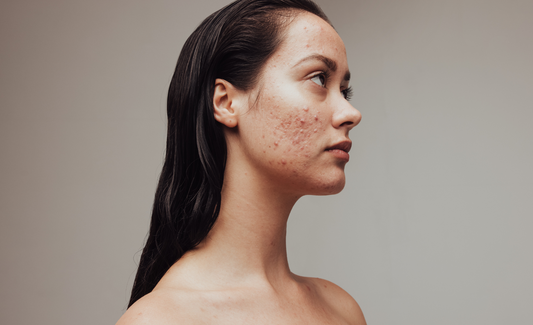
Red light therapy after running, cycling and walking
Share
Recovery after running, cycling and walking scientifically proven
In the sports world, everything revolves around balance: training, performance and recovery in time. For many athletes, recovery is a weak link, while it is the key to progress. Red light therapy – also called photobiomodulation – is a method that is increasingly used to improve recovery after exercise.
The therapy uses red and near-infrared light to stimulate muscle cells. This activates mitochondria (the energy factories in our cells) and increases the production of ATP – essential for cell repair and muscle regeneration. But does it really work?
More and more scientific studies show that red light therapy is beneficial for athletes who regularly walk, run or cycle. Below you can read what the benefits are, and which studies support this.
What are the benefits of red light therapy for athletes?
▶︎ Accelerates muscle recovery after exercise
▶︎ Reduces muscle pain and inflammation
▶︎ Lowers lactate levels after intense exercise
▶︎ Increases oxygen uptake and muscle performance
▶︎ Helps with faster recovery between repeated workouts
▶︎ Supports sleep recovery and energy balance
What does the research say?
Below you will find six well-founded studies on red light therapy, applied to running, cycling or walking. Each study is briefly explained with a direct link to the original source.
1. Improved cycling performance and reduced fatigue
Study: Effects of photobiomodulation therapy on performance in successive time-to-exhaustion cycling tests
Year: 2023
Results: Cyclists treated their legs with red lights before three consecutive cycling tests. The treated group performed better, cycled longer and had less muscle fatigue than the placebo group.
→ View the study
2. Running with better endurance
Study: Photobiomodulation Therapy on Physiological and Performance Parameters During Running Tests
Year: 2018
Results: Red light therapy before a running test led to higher oxygen uptake and longer running time. The right dosage was crucial for the effect.
→ Read the article
3. Walking and Muscle Recovery with Daily Exercise During Menopause
Study: Effects of Infrared-LED Illumination Applied During High-Intensity Treadmill Training in Postmenopausal Women
Year: 2011
Results: In this randomized study, twenty middle-aged women participated in intensive treadmill training twice a week for three months. Half of the group received infrared LED illumination (850 nm) on the leg muscles during training, the other half trained without light.
The women in the red light group achieved significantly better results:
▶︎ They achieved higher muscle strength (measured in watts and total work)
▶︎ There was less muscle fatigue after training
▶︎ They were able to continue for longer at submaximal exertion
The control group showed an increase in muscle fatigue, while in the LED group it remained stable . Although body composition did not change, the difference in muscle performance between the two groups was significant.
→ View the study on the publisher's website (Liebert Pub)
4. Faster recovery after matches (indoor soccer)
Study: Photobiomodulation Before Futsal Matches Improves Recovery
Year: 2019
Results: Players who were given red lights for matches remained active longer, recovered faster and had less muscle damage afterwards.
→ Read more here
5. Systematic review of dozens of studies
Study: Photobiomodulation for muscular performance and fatigue reduction
Year: 2018
Results: This review analyzed 46 studies. Conclusion: PBM increases muscle strength, improves performance and reduces recovery time – especially effective for endurance efforts such as cycling and running.
→ Read the review
6. Sleep recovery and indirect benefits for athletes
Study: Sleep Hygiene and Recovery Strategies in Elite Athletes
Year: 2015
Results: PBM applied in the evening was shown to improve sleep quality. Deeper sleep means better muscle recovery and less fatigue the next day.
→ View the study (PDF)
Who is red light therapy suitable for?
▶︎ Runners – For faster muscle recovery after interval or long endurance runs
▶︎ Cyclists – To reduce fatigue between sessions or stages
▶︎ Walkers & hikers – For muscle pain or heavy hiking loads
▶︎ Recreational athletes – As a supplement to warm-up and cool-down
▶︎ Older athletes or those recovering – For support with low-intensity training
How Red Light Therapy Works: The Importance of Wavelengths
The effectiveness of red light therapy is largely determined by the wavelength of light used. Light waves are measured in nanometers (nm) and each wavelength has a different penetrating power and a specific effect on the body.
In sports recovery, the following wavelengths are particularly relevant:
▶︎ 630nm – Red light with shallow penetration, especially effective for skin regeneration, superficial blood circulation and mild anti-inflammatory.
▶︎ 660nm – Deeper red light, often used for muscle recovery in superficial layers and improvement of mitochondrial activity. This wavelength is common in scientific studies.
▶︎ 810nm – Starts in the near infrared spectrum. Effectively absorbed by cytochrome c oxidase (a key enzyme in cellular energy production), and targets deeper muscle and nerve tissue.
▶︎ 850nm – One of the most widely used wavelengths for sports recovery. Penetrates deep into muscles, tendons and joints. Strongly supported by exercise recovery research.
▶︎ 940 nm – Even deeper into the tissue. Less absorbed by hemoglobin, allowing it to penetrate deeper. Especially suitable for joint tissue and tendon attachments.
▶︎ 1060 nm – Very deep penetration. Increasingly used for thermal stimulation of fat layers or deep muscle groups, although less specific sports recovery research has been done with it.
The effect of red light therapy is strongly influenced by the wavelength of the light used . Each wavelength has a different depth effect in the tissue:
| Wavelength | Type of light | Effect on the body |
|---|---|---|
| 630 nm | Red light | Stimulates superficial repair and skin layers |
| 660 nm | Deep red light | Activates muscle cells and accelerates tissue repair |
| 810 nm | Near infrared | Stimulates deep muscle tissue and nervous system |
| 850 nm | Near infrared | Improves muscle strength and recovery |
| 940 nm | Deep NIR | Focused on tendons and joints |
| 1060 nm | Very deep NIR | Thermal stimulation and deep muscle layers |
In summary:
- 630–660 nm (red light) → superficial muscle tissue, skin, blood flow
- 810–850 nm (near infrared) → deep muscle recovery, tendons, joints
- 940–1060 nm (deep NIR) → deep joints and therapeutic heat
Most effective PBM devices combine multiple wavelengths to reach different layers in the tissue – an approach increasingly used in sports research.
Summary
Red light therapy is a relatively simple, safe and effective method to accelerate sports recovery. More and more studies show that this therapy:
- Promotes recovery after physical exertion
- Fatigue decreases with repeated training
- Performance can improve even with short-term or moderate exertion
Whether you cycle, run or walk – PBM has a wide range of applications and works best when combined with good training and recovery habits (such as sleep and nutrition).

